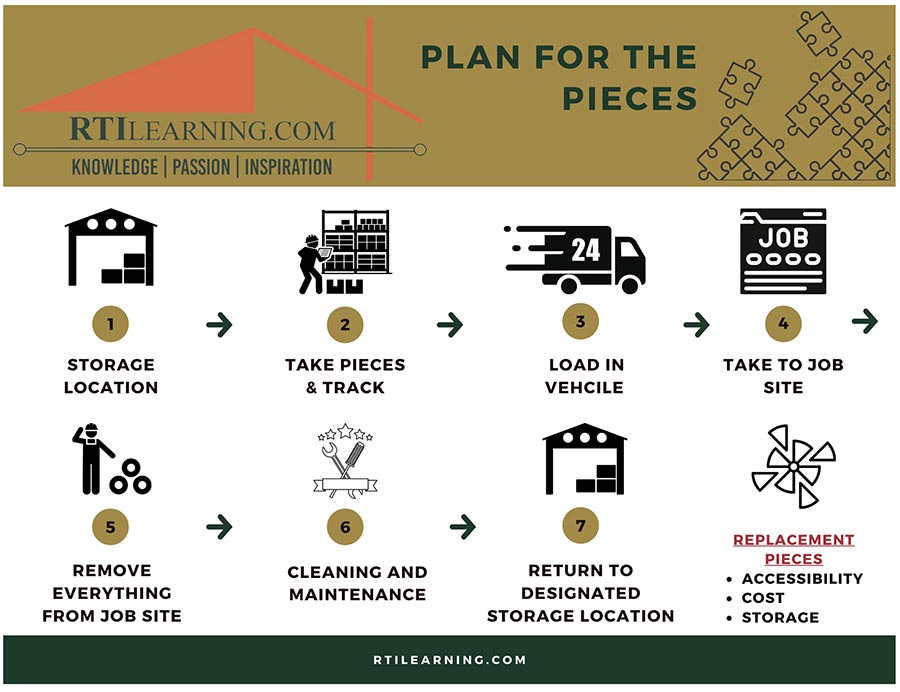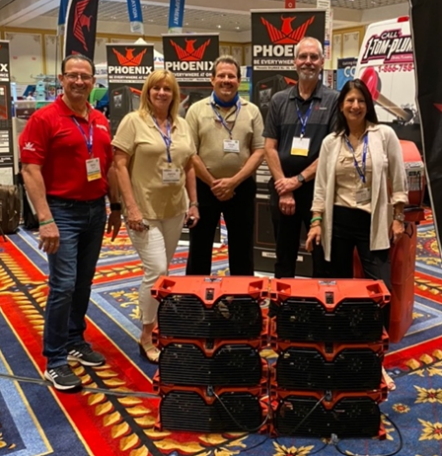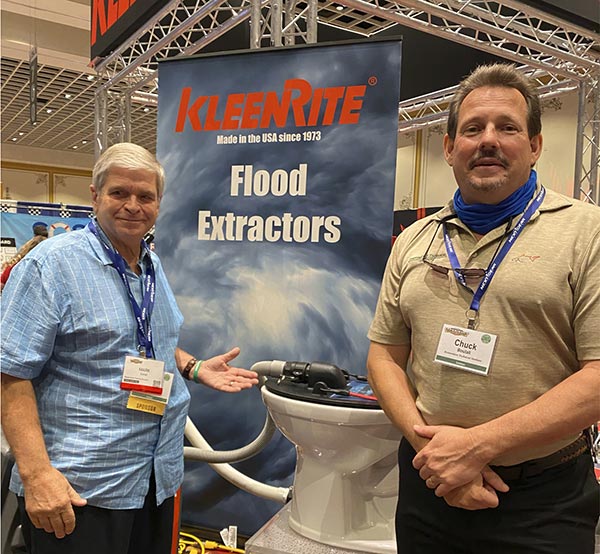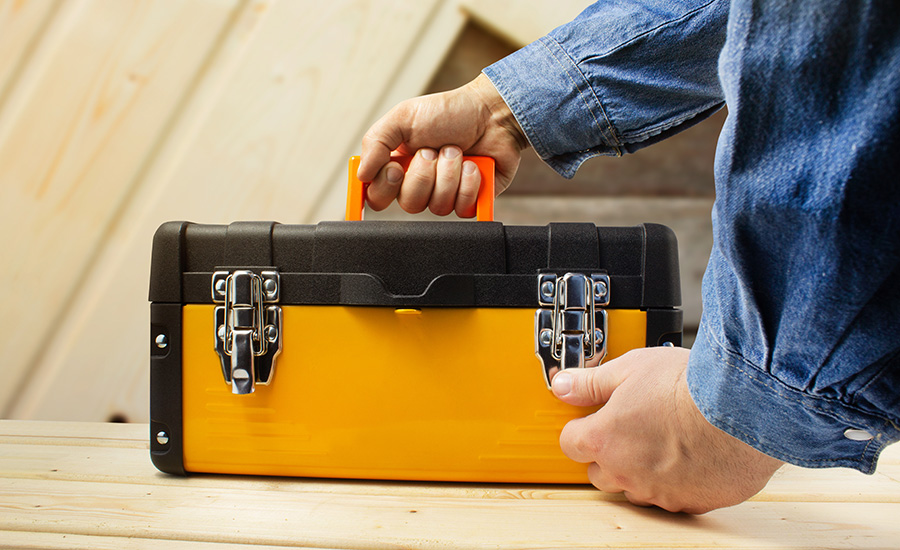“To the man who only has a hammer, everything he encounters begins to look like a nail.” –Abraham Maslow
As trainers, this quote is very powerful as it speaks to our skills, abilities, processes, technology, tools, equipment and supplies. It reminds us that we must constantly be evaluating new developments and offerings that are evolving at a rapid pace so that we can improve and advance our operations.
Employing anything new should be a conscious effort. We are offering some tips on deploying new initiatives to your organization and some of our favorite things: old, new, borrowed and blue.
This piece is a collaboration of Lisa Lavender, COO, Chuck Boutall, director of education, and John Perella, curriculum developer & trainer, with Restoration Technical Institute (RTI).
Lisa’s Light-Bulb Moment:
I recall a very specific moment when I was introduced to a new technology. I was excited to implement it in our organization. I went to a co-worker and explained enthusiastically what I wanted to buy and what it could do. He engaged me in positive dialogue and articulated to me why the cost of implementation would exceed the value. He went on to say, “Did you think about all the pieces?” I did an informal analysis in my mind, set aside my emotions and realized that it was not in our best interest to move forward.
Next, the years of what I will refer to as emotional purchasing (the management of things collecting dust or simply not providing the intended value) began to run through my head. We must be deliberate in our approach to deploying anything new!
For some, one of the most exciting aspects of the industry is the constant evolution of technology, tools and equipment, a.k.a “toys.” Employing new things can bring value in many ways, including but not limited to:
- Improved efficiency and expansion of capacity
- Enhancement of service and quality to those being served
Before jumping in and thinking, “Wow! That is cool! I want it! We can use it,” we offer the following tips and considerations:
- Evaluating and implementing an innovation should be a specific, defined function assigned to a member or members of your team. The function should have a clearly defined expectation. A timeline for deployment should be part of the clearly defined expectation.
- Always take a cost-versus-benefit approach. Be objective; it is easy to be overcome by excitement and vision, and lose focus on facts.
- Consider all things that relate to anything new:
- Communicating to team: Did you ever hear a team member say, “I did not know we have that”?
- Accessibility
- Training
- Updating: Inventories, systems, SOPs, supply lists, etc.
- If applicable: Storage, maintenance, repairs, etc.
- Communication of the value added to those you serve
- Develop and/or use a standardized evaluation form or process: For example, from learning the “hard way” when applicable, ask, “How are we going to keep track and inventory all the pieces?” (See “Plan for the pieces infographic below)
- Gather input from the end users. For example, if it is something that a technician in the field will utilize, listen to their feedback and engage them.

And now we present some of our favorite things: Some things old, some things new, some things borrowed and something blue.
Although this is rooted in a tradition for new brides of which the origins are thought to date back to 19th-century England, we have adapted the meanings for our industry.
Some things old: To keep us grounded in our past and connect us to a bright future
There is an endless list of tools, technology supplies, etc. These items are both industry specific and have broad applications, and we think they are great to have in your inventory.
Dust-collection tools, used in a variety of applications, from sanding to sawing.
- Used For: Construction, water mitigation and more.
- Why we like it: Improve efficiencies and results by deploying these tools. They may reduce the need for containment in dust control, cleanup efforts, and mitigate the potential of secondary issues to the structure and contents.
Self-dispensing cleaning tools, like a bucket-less mop.
- Used for: Cleaning floors, windows and more.
- Why we like it: Efficiency can immediately be improved. You can be more nimble while doing the related tasks as your tools and solutions are all self-contained. Depending on the task at hand, you can also improve quality.
We also point you to what remain some of our favorite “old” things presented in 2017, Restoring Success, The Odd Ball Tools in a Restorer’s Toolbox.
Some things new: Optimism for what lies ahead
For the early adopters, we found some great new things at The Experience in September 2021 that got our attention.
Phoenix Focus II Dual Axial, spreading the air with power
- Used for: Ventilation and restorative drying.
- Why we like it: It provides a lot of air (1,000+ CFM) and needs only 1.1 amps. It is small and lightweight, making it easy to move, clean and store. It allows us to maximize the use of space in the warehouse and vehicles. Dual-focused fans offer great dispersion of airflow.

Inflatable containment by Airwall; you must blow it up to contain it in
- Used for: A wide variety of scenarios and applications, including but not limited to: Source removal; general demolition; containment of dust, debris and contaminates.
- Why we like it: It is much faster and easier to deploy than your typical containment system.

Hose cleaner by Frosty’s Innovations. Does the snowman know?
- Used for: Cleaning vacuum hoses.
- Why we like it: Super-fast and easy way to decontaminate vacuum hoses used in cleaning, extraction and other endeavors.

Relax Saunas’ Spa. Heat up and purge out just in time for the holidays!
- Used for: Removing contaminants from the human body…
- Why we like it: The infrared light and heat feels good. During the session, Chuck received a great sweat-out and purging of the lymph system, and he left feeling rejuvenated! Just what a restorer needs.

Restoration of facial skin by Lola Soap. Facial restorer; look your best while you perform your best.
- Used for: Wrinkle removal! Do I need to say more if you’re over 40?
- Why we like it: It seems to work very well, some of us were accused of having cosmetic work done in Vegas! Designed to rebuild collagen.
KleenRite PumpOut Shield, to attach to the top of toilets.
- Used for: Easily discharging water from the pump out of portable carpet cleaning or water extraction units to the sanitary sewer system.
- Why we like it: If you’ve ever extracted a room of carpet, then walked into the bathroom to only discover that your discharge hose came out of the toilet or tub and deposited all the water into the bathroom, you’ll understand.

LiDAR technology: We were made aware of this technology from industry friend Cory Graves, Restoration 1, who remains on-top and ahead of technology. It is important to network in the industry and share ideas.
- Used for: In our industry, it is being offered in some of the new generation of devices, and is being integrated in applications for measuring and sketching spaces.
- Why we like it: It allows us to improve both the quality and efficiency in gathering important information in the field when combined with easy-to-use-and-deploy applications.
Some things borrowed: To bring good fortune and luck
Once you have gone through the evaluation process, you may have concluded that it is better to borrow, i.e., rent. Weather you own these things are not, there are some things that you may always be ready to rent.
Generators
- Used for: Standby, temporary and emergency power.
- Why we borrow it: Generators are expensive and seldom used in our industry on a regular basis. With a high capital outlay and maintenance costs, they also require specialized skills and peripherals when utilizing on the job. When you rent, you can typically get support on the specialized skills and setup needs.
Large climate-control equipment
- Used for: A wide variety of scenarios and applications including but not limited to planned outages, permanent system upgrades, construction drying and water damage restoration.
- Why we borrow it: Like generators, they require a high capital outlay, often have low usage rates, and require highly skilled and experienced staff to use effectively. Storage and maintenance of these types of units may also present challenges.
Specialty surface preparation and cleaning equipment
- Used for: Source removal, coatings removal, material removal and more.
- Why we borrow it: In addition to the previously mentioned considerations of investment, skills and usage rates, for those who do not use this type of equipment on a regular basis or as part of your core business, it is a tool in the toolbox that is often best to rent. From the perspective of a restorer who encounters a wide range of scenarios, renting this type of equipment gives you the ability to evaluate the optimal equipment and approach for each individual project.
Something Blue: To ward off misfortune
Because we must finish with something blue…
Makita cordless cut-out saw with dust control options
- Used for: Endless applications, but imagine having this ready to go on a water loss.
- Why we like it: The ease and efficiency of cutting drywall on a water loss and the price point makes this a great tool to keep in the arsenal.
As you embrace the old, new, borrowed and blue available to the industry, we hope it brings you much Restoring Success.

